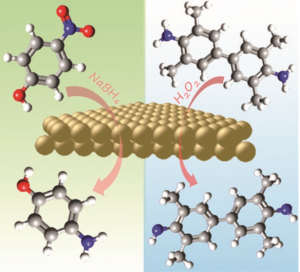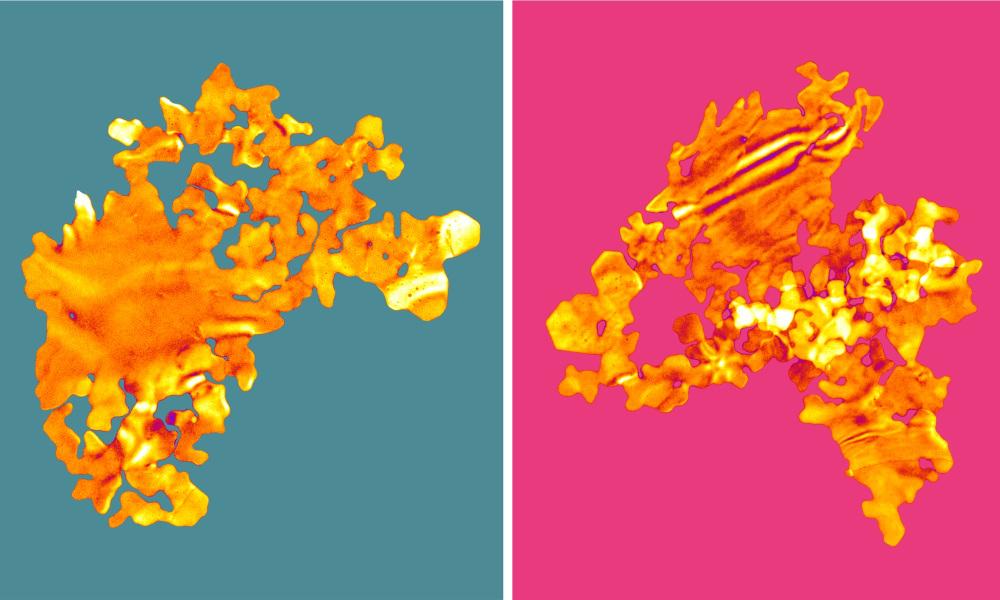Ultrathin 2D nanomaterials, particularly from noble metals, have received increasing research interest due to their unique electronic, mechanical, and surface-related properties allowing for potential applications in bioimaging, therapy, sensing, and catalysts. The ultrathin nature and 2D morphology of these materials allow for a high surface area-to-volume ratio, an abundant number of exposed catalytically active sites, and large interfacial area in contact with the substrate, which lead to high activity. Due to these unique features and potential applications, it has become critical to develop simple and reliable synthesis strategies.
A major challenge in producing sub-nanometer thick 2D metal nanomaterials is doing so free of a solid substrate. This is due to the tendency of metal atoms to form a highly isotropic 3D close-packed crystal lattice. The natural tendency toward 3D growth can be suppressed by introducing confinement to induce anisotropic growth. Until now, a range of synthesis strategies have been utilized using confinement substances to prevent the free growth of primary metal nuclei and promote 2D anisotropic growth, including: 1) surface-active agents, such as polymers and gases, that selectively bind onto low-index metal surfaces; and 2) templates, e.g., lamellar hydrogels, graphene and its derivatives. However, there is no synthetic strategy that allows ambient wet-chemical synthesis of free-standing atomically-thin 2D metal nanostructures.

Subnanometer gold nanosheets (thickness: 0.47 ± 0.01 nm) are prepared via a facile aqueous synthesis at ambient temperature.
In a study published in Advance Science, Sunjie Ye, Stephen D. Evans, and co-workers have developed a synthetic strategy based on methyl orange (MO) to prepare atomically-thin gold nanosheets (coined “nanoseaweeds” because of their morphology, color, and aqueous growth) via an ambient wet-chemical synthesis. In the synthesis, the MO molecules provide the required confinement in an easily-accessible, low-cost, and environmentally friendly manner.
As a proof of concept, the resulting nanoseaweeds display pronounced catalytic performance toward the reduction of 4-nitrophenoal and the degradation of H2O2. Furthermore, they can be exploited in sensing systems based on peroxidase mimicking activity, such as the colorimetric detection of H2O2.
Future challenges the team will face is in translating their findings from the lab to industry, e.g., scaling up the preparation. Other challenges include understanding the underlying mechanisms involved and controlling the structural parameters.
This synthesis strategy represents the first fabrication of freestanding 2D gold with a sub-nanometer thickness and provides a pathway toward atomically-thin metal nanomaterials that hold potential across a wide range of applications, such as catalysis, sensors, biomedicine, and environmental protection.

















